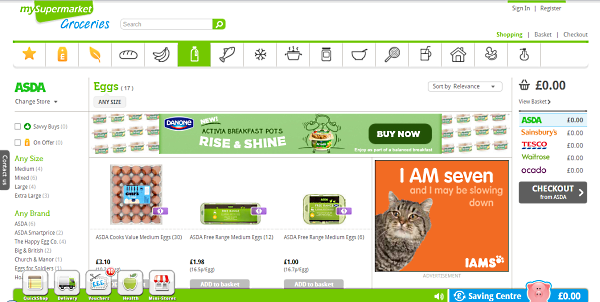Pesquisa do Núcleo de Pesquisa de Nutrição em Produção de Refeições da Universidade Federal de Santa Catarina (UFSC) revelou que dois em cada três itens alimentícios tinham mais que 600 miligramas de sódio por 100 gramas ou 100 mililitros do produto, índice considerado alto. Os pesquisadores analisaram a informação alimentar e nutricional de sódio em rótulos de cerca de 1,3 mil alimentos industrializados ultraprocessados prontos e semiprontos e constatou que a maioria dos produtos tinha mais sódio do que o recomendado.
Além do excesso, a pesquisa constatou uma grande variação na oferta do nutriente entre produtos similares, mas de marcas diferentes, como o molho de tomate. A pesquisadora relata que em alguns não havia adição de sódio, enquanto em outros a quantidade ofertada em 100 gramas de molho chegava a aproximadamente 80% da recomendação diária preconizada pela Organização Mundial da Saúde (OMS). As conclusões reforçam a importância do cuidado na hora de escolher os alimentos.
Segundo o médico cardiologista Victor Lira, na escolha de um alimento devemos observar além do preço, validade e quantidade de calorias e sódio, principalmente os industrializados. “Praticamente todos os alimentos já contém sódio na sua constituição, mas os alimentos industrializados apresentam uma maior concentração deste sal para aumentar o tempo de validade do produto e ter um sabor mais chamativo para o cliente. Porém, o consumo excessivo destes alimentos pode trazer sérias consequências para a saúde do paciente. O sódio leva a um aumento da pressão arterial, a hipertensão, gerando problemas renais, edemas e doenças cardiovasculares, como infarto e acidente vascular cerebral”, explica.
De acordo com a OMS, o ideal é que cada adulto consuma diariamente até cinco gramas de sal, o que equivale a uma colher rasa de chá do produto por dia. No Brasil, pesquisas apontam que a média ultrapassa o dobro e fica em 12 gramas, um perigo para o organismo.
De olho no aumento nos índices de brasileiros com doenças crônicas como hipertensão, obesidade e diabete, a Agência Nacional de Vigilância Sanitária (Anvisa) negocia com o setor alimentício uma redução da quantidade de sódio em uma série de alimentos industrializados, como pães, salgadinhos e embutidos, até 2016. Porém, algumas redes de supermercados já se anteciparam a medida. O Grupo Pão de Açúcar já reduziu a participação de sal no pão francês em 10% de 2% para 1,8%. A ação envolve a produção de 490 padarias próprias, o que significa uma produção mensal de cerca de 44 milhões unidades de pão francês. “O pão francês é um alimento que compõe a grande maioria das mesas dos brasileiros. Precisaríamos cuidar para que vários aspectos dessa mudança fossem exaustivamente testados para garantir a sua eficácia tanto no que diz respeito aos aspectos relacionados à saúde e qualidade de vida, quanto da preservação do sabor, tão apreciado pelos consumidores”, declara Mariangela Ikeda, diretora de desenvolvimento e formação técnica.
A nova receita do pão francês com menor teor de sal está em linha com as diretrizes do Guia de Boas Práticas Nutricionais para o pão francês, elaborado pela Anvisa, material que tem por objetivo promover a redução da quantidade de sódio usado na alimentação brasileira como forma de combater doenças crônicas, como pressão alta e problemas cardiovasculares.
Source: Portalaz (http://goo.gl/KsuIV)
448 Carrefour Markets
Actuellement Carrefour compte 430 supermarchés Market dans notre pays. Avec cinq nouveaux points de vente en perspective, en plus des anciens magasins O’Cool, cela portera le nombre total de Market à 448 d’ici l’été prochain. Les magasins O’Cool repris par Carrefour seront exploités en franchise et les 50 employés concernés maintiendront leur emploi. Les points de vente O’Cool occupent en moyenne une surface de 450 à 850 m² et se situent tous en Flandre, sauf un en Wallonie. « Nous avons choisi des zones où notre enseigne est encore peu ou pas implantée », explique Carrefour.
Grâce à ces acquisitions, Carrefour poursuit sa relance dans notre pays. Depuis les lourdes restructurations, qui avaient entraîné la fermeture de nombreux hypermarchés, les Français ont misé pleinement sur de plus petits formats, notamment les magasins de proximité (Express) et les formats moyens (Market, les anciens GB). Une stratégie couronnée de succès, car depuis quelques trimestres la chaîne affiche dans notre pays une accélération de sa croissance.
Albert Heijn?
On ignore encore quel distributeur alimentaire a racheté les douze autres magasins. Selon certains insiders, il pourrait s’agir d’Albert Heijn, avec un contre-argument toutefois : la chaîne de supermarchés hollandaise recherche généralement des surfaces commerciales plus grandes de 1.000 à 1.200 m², comparé aux surfaces plus petites des magasins O’Cool concernés.
Quant à l’avenir des 81 points de vente restants, détenus par O’Cool, rien n’a encore été communiqué. Toutefois la chaîne de surgelés française Picard avait déjà laissé entendre vouloir conquérir le marché belgeet des négociations seraient en cours avec un autre partenaire étranger – « pas un repreneur, mais un partenaire stratégique », selon Jurgen Egger, l’avocat chargé de la procédure de réorganisation.
Selon l’avocat, ce partenaire verrait un avenir possible pour la chaîne O’Cool dans une version dégraissée.C’est pourquoi la chaîne de surgelés a demandé au tribunal de commerce de Gand de prolonger la protection contre ses créanciers. Le jugement devrait être prononcé le 7 novembre. Pour les 300 employés restants, l’avenir reste donc encore incertain.
Source: Retail Detail (http://goo.gl/qHYbH)





























